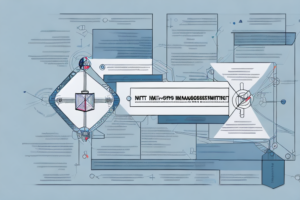What is system security plan in RMF?
7 min read
A computer system with a security shield protecting it
In the world of cybersecurity, the Risk Management Framework (RMF) is a widely recognized standard for guiding organizations in the development and implementation of effective risk management strategies. Central to the RMF process is the creation and maintenance of a System Security Plan (SSP). The SSP is a comprehensive document that outlines an organization’s approach to managing security risks and serves as the cornerstone of a successful RMF program.
Understanding the Risk Management Framework (RMF)
Before diving into the specifics of an SSP, it is important to understand the broader context in which it is created. The RMF is a risk-based approach to security that emphasizes the identification, assessment, and mitigation of potential risks to critical systems and data. It is based on a continuous cycle of assessment and improvement and is designed to provide organizations with a flexible and adaptable framework for managing security risks.
The RMF consists of six steps: Categorization, Control Selection, Implementation, Assessment, Authorization, and Monitoring. Each step is designed to ensure that security risks are identified, assessed, and mitigated in a systematic and comprehensive manner. The RMF is used by federal agencies and organizations that handle sensitive information to ensure that their systems and data are protected from potential threats. By following the RMF, organizations can ensure that their security posture is continuously improving and that they are able to adapt to new threats as they emerge.
The Importance of a System Security Plan
One of the most critical elements of the RMF process is the creation and maintenance of a well-crafted SSP. The SSP serves as a central repository for information about an organization’s security posture and outlines the measures that will be taken to manage security risks. As such, it is an essential component of any successful RMF program.
One of the key benefits of having a comprehensive SSP is that it helps organizations to identify potential security vulnerabilities and threats. By conducting a thorough risk assessment and documenting the results in the SSP, organizations can develop effective strategies for mitigating risks and preventing security breaches.
Another important aspect of the SSP is that it provides a framework for ongoing security monitoring and evaluation. By regularly reviewing and updating the SSP, organizations can ensure that their security measures remain effective and up-to-date, and that they are able to respond quickly and effectively to new threats and vulnerabilities as they emerge.
How to Develop a System Security Plan for RMF Compliance
The development of an SSP requires a thorough understanding of an organization’s systems, data, and operational environment. It should begin with the identification of all assets that need to be protected and a careful assessment of the risks associated with each asset. This process should be driven by the organization’s security policies and standards and should be regularly reviewed and updated to reflect changes in the threat landscape.
Once the assets have been identified and the risks assessed, the next step is to develop a set of security controls that will mitigate those risks. These controls should be based on industry best practices and tailored to the specific needs of the organization. They should also be prioritized based on the level of risk they address and the resources available to implement them.
Finally, the SSP should be documented and communicated to all relevant stakeholders, including system owners, security personnel, and senior management. It should also be tested and validated to ensure that it is effective in protecting the organization’s assets and meeting RMF compliance requirements.
NIST SP 800-53: The Key Control Families Required in a System Security Plan
The National Institute of Standards and Technology (NIST) has developed a comprehensive set of guidance documents and control families for managing security risks in the federal government. One of these documents, NIST SP 800-53, outlines the key control families that are required in an SSP. These control families include access control, audit and accountability, identification and authentication, and many others. Organizations seeking to develop an effective SSP should carefully review and incorporate these control families into their plans.
It is important to note that NIST SP 800-53 is not only applicable to federal government systems, but can also be used by private sector organizations to enhance their own security posture. By implementing the control families outlined in this document, organizations can better protect their systems and data from a wide range of threats, including cyber attacks, insider threats, and physical security breaches. Additionally, compliance with NIST SP 800-53 can help organizations meet regulatory requirements and demonstrate due diligence in their security practices.
Common Pitfalls to Avoid When Creating a System Security Plan
Creating a robust and effective SSP can be a complex process. There are many pitfalls that organizations can fall into, including failing to involve all the relevant stakeholders, neglecting to incorporate all necessary controls, and failing to adequately update the plan over time. To avoid these pitfalls, organizations should engage in a rigorous and ongoing process of review and revision of their SSP.
Another common pitfall to avoid when creating a system security plan is failing to properly document the plan. Documentation is crucial for ensuring that all stakeholders understand the plan and can follow it effectively. Without proper documentation, the plan may be misunderstood or misinterpreted, leading to security vulnerabilities.
Additionally, organizations should be careful not to rely too heavily on technology solutions when creating their SSP. While technology can certainly play an important role in securing systems, it is not a panacea. Organizations should also focus on developing strong policies and procedures, as well as training employees on best practices for security. A well-rounded approach that incorporates both technology and human factors is key to creating a truly effective SSP.
Best Practices for Maintaining and Updating Your System Security Plan
Maintaining and updating an SSP is an ongoing process that requires a significant amount of effort and attention. To ensure that your SSP remains effective over time, organizations should make use of best practices such as regular monitoring and review, ongoing training and education for relevant personnel, and the incorporation of emerging threat information into the plan.
How to Conduct Periodic Reviews of Your System Security Plan
Periodic reviews of an SSP are essential to ensuring that it remains effective and relevant over time. During these reviews, organizations should carefully assess the adequacy of their controls, identify any new risks or vulnerabilities, and update the plan as necessary to address any gaps or weaknesses.
How to Implement an Effective Risk Management Strategy for Your System
The development and implementation of an effective risk management strategy is a key component of any SSP. This strategy should be tailored to an organization’s specific needs and should be designed to help it identify, assess, and mitigate potential risks to critical systems and data. A strong risk management strategy should incorporate elements such as regular risk assessments, ongoing monitoring and review, and a comprehensive approach to incident response.
The Role of Continuous Monitoring in Ensuring the Effectiveness of Your System Security Plan
Continuous monitoring is an essential element of any effective SSP. It involves the ongoing assessment and review of an organization’s security controls and is designed to identify potential risks or vulnerabilities before they can be exploited. Continuous monitoring should be integrated into an organization’s overall risk management strategy and should involve regular assessments of technical controls, physical security measures, and personnel practices.
Navigating the Documentation Requirements for Your System Security Plan
Effective documentation is a critical component of any SSP. It provides a clear and comprehensive record of an organization’s security posture as well as the measures being taken to manage risks. Documentation requirements for an SSP can vary depending on an organization’s specific needs and should be carefully considered as part of the plan development process.
How to Ensure Compliance with Federal Information Processing Standards (FIPS) in Your System Security Plan
Organizations operating in the federal government space are often required to comply with a set of regulations and standards known as Federal Information Processing Standards (FIPS). Compliance with these standards is essential to ensuring the security and privacy of sensitive data and requires the inclusion of specific controls, policies, and procedures in an organization’s SSP.
The Role of Penetration Testing in Ensuring the Strength of Your System Security Plan
Penetration testing is a critical tool for assessing the strength and effectiveness of an organization’s security controls. This process involves the simulation of real-world attacks on an organization’s systems and can help identify weaknesses or vulnerabilities in the system. Penetration testing should be included as part of an organization’s overall risk management strategy and should be conducted regularly to ensure that security controls remain effective.
Integrating Vulnerability Scanning into Your Overall Risk Management Strategy
Vulnerability scanning is another essential tool for managing security risks. It involves the regular scanning of an organization’s systems and networks to identify potential vulnerabilities or weaknesses in the system. This information can then be used to inform the development of an effective risk management strategy and should be integrated into an organization’s ongoing monitoring and review processes.
How to Leverage Automation Tools to Streamline the Creation and Maintenance of Your System Security Plan
Creating and maintaining an SSP can be a time-consuming and resource-intensive process. Many organizations have found that the use of automation tools can help streamline this process, reducing the time and effort required to develop and maintain an effective SSP. These tools can include automated risk assessment and analysis tools, security information and event management (SIEM) systems, and vulnerability management software.
In conclusion, the development and maintenance of an effective System Security Plan (SSP) are essential components of any successful Risk Management Framework (RMF) program. Organizations should carefully consider the guidance provided in this article, incorporating best practices, control families, and ongoing reviews and updates to ensure the strength and effectiveness of their SSP over time.



